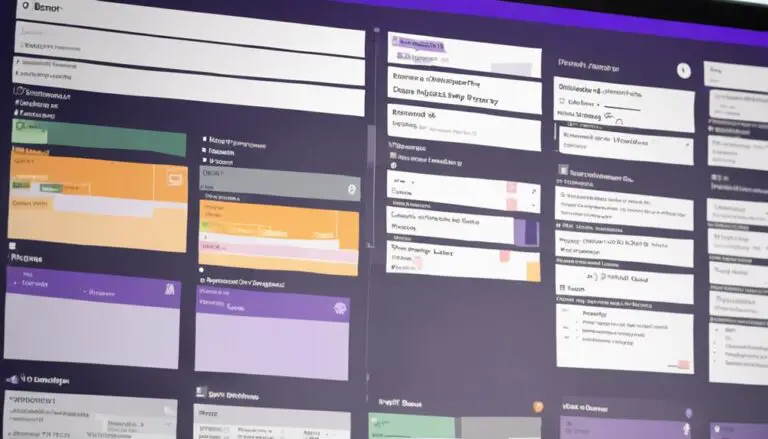When you first start implementing Kanban, you may wonder about the role of stories in this methodology. Understanding how stories fit into Kanban can significantly impact your project management approach.
By exploring this guide, you will uncover practical insights on how to incorporate stories effectively, enhancing your Kanban workflow. Additionally, you will learn how to leverage storytelling techniques to communicate effectively with your team, leading to improved collaboration and productivity. Furthermore, this guide provides valuable tips on how to integrate storytelling into the kanban retrospective process, allowing you to reflect on past successes and failures in a more meaningful and impactful way. Through the use of storytelling, you can create a more engaging and insightful kanban retrospective process, ultimately driving continuous improvement within your team.
Key Takeaways
- Kanban utilizes task cards with essential details instead of traditional user stories.
- Stories guide work priorities and help in breaking down tasks for the board.
- Implementing stories enhances visibility, collaboration, and task tracking in Kanban.
- Breaking down user stories into manageable tasks aligns work with user needs efficiently.
Understanding Kanban Stories
In grasping the essence of Kanban stories, it's crucial to recognize the fundamental shift in focus from traditional user story-based planning to visualizing and managing work through task cards on a board.
Kanban doesn't rely on detailed user stories like Scrum; instead, it emphasizes the continuous flow of work and limiting work in progress.
Task cards play a pivotal role in Kanban, representing work items as they move through different stages on the board. These cards typically include essential information such as task description, priority, and status, enabling teams to track and manage tasks effectively.
Incorporating Stories Into Kanban
To effectively integrate stories into your Kanban workflow, consider them as user-centric descriptions of features or requirements that guide your team's work priorities. Stories help in understanding and prioritizing work based on user needs, breaking down into smaller tasks that can be added to the Kanban board.
By prioritizing stories on the board, you can efficiently manage your workflow, ensuring that the most critical user requirements are addressed first. Incorporating stories into Kanban enhances communication within your team, ensuring everyone is aligned on the goals and objectives of the project.
This user-centric approach not only improves workflow management but also fosters better collaboration and teamwork. By actively incorporating stories into your Kanban process, you create a more structured and transparent way of working that keeps everyone focused on delivering value to the end-user.
Benefits of Using Stories in Kanban
Consider how incorporating stories into your Kanban workflow enhances visibility and collaboration, ultimately improving task tracking and prioritization.
Stories in Kanban serve as a bridge between your team's goals and the actual work needed to achieve them. By using story cards on a simple Kanban board, you increase visibility into the status of tasks and the overall progress of your project. This transparency enables better prioritization as team members can easily see what needs to be done next.
Communication and collaboration are also enhanced through the use of stories, as they provide context and details about the work to be done. As a result, your team can work more efficiently within the Agile framework, focusing on delivering value incrementally.
Embracing stories in Kanban aligns your team towards a common goal, promoting a shared understanding of the work at hand, and encouraging a culture of continuous improvement in project management tools.
Best Practices for Kanban Stories
For effective implementation of Kanban stories, focus on breaking down work into manageable tasks that smoothly progress through workflow stages.
In Kanban, task cards play a crucial role in representing work items within the system. These task cards contain essential details such as task descriptions, priorities, assignees, and relevant information.
By breaking down work into manageable tasks, you enhance visibility and tracking of individual work items as they move through various workflow stages. While Kanban doesn't strictly adhere to user stories, clear task descriptions are pivotal for effective workflow management.
Ensuring that task cards are detailed and descriptive facilitates a seamless flow of work items through the Kanban system. Emphasizing the importance of manageable tasks and detailed task descriptions contributes to the overall efficiency and effectiveness of workflow management in Kanban.
Implementing Stories in Your Kanban Workflow
When incorporating stories into your Kanban workflow, focus on defining clear and detailed tasks that align with user needs and workflow progression. To effectively implement stories in your Kanban board, consider the following:
- Break Down Tasks: Divide user stories into smaller, manageable tasks that can be easily tracked and completed.
- Prioritize Work Items: Arrange tasks in order of importance to ensure that the most critical items are addressed first.
- Encourage Collaboration: Invite team members to contribute to and discuss the details of each story, fostering a sense of teamwork and shared responsibility.
Frequently Asked Questions
Do You Have Stories in Kanban?
In Kanban, you can choose to include stories on cards for more context. While not a standard practice, teams can adapt their process to fit needs. Focus on visualizing workflow, setting limits, and improving continuously.
Do You Have Story Points in Kanban?
In Kanban, story points aren't used. Instead, focus on flow efficiency and limiting WIP. Prioritize based on value and workflow optimization. No need for story point estimation; visualize work and manage flow effectively without story points.
What Is Kanban Explained for Beginners?
In Kanban basics, visualize workflow, collaborate with the team for continuous improvement. Limit work, track cycle time, set WIP limits following lean principles. Manage boards, track metrics for better efficiency. Let's work together to optimize processes!
What Are the 5 Rules of Kanban?
Limit work to enhance flow, visualize stages for tracking, manage tasks with clear policies, encourage improvement through collaboration, use metrics to optimize. Embrace WIP limits, adopt pull system, foster a Kaizen culture.
Conclusion
So, as you can see, incorporating stories into your Kanban workflow can greatly enhance communication and collaboration.
While it may seem like an extra step, the benefits far outweigh the effort.
By breaking down tasks into user stories, you'll be able to prioritize effectively and keep everyone on the same page.
Trust the process and give it a try – you'll soon see the positive impact it can have on your project management!





